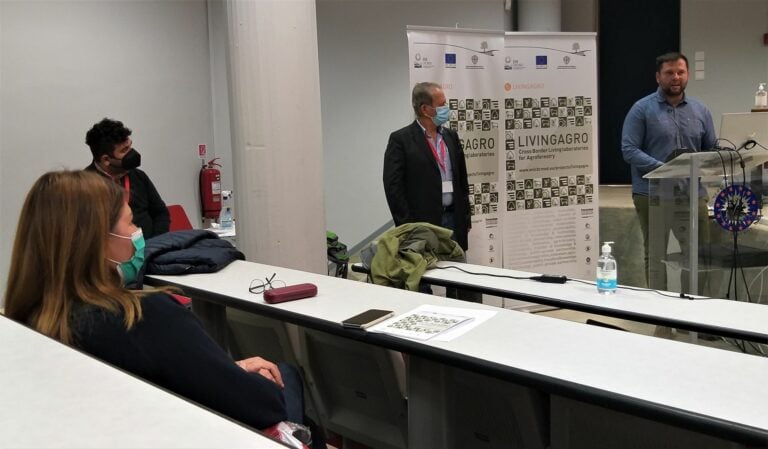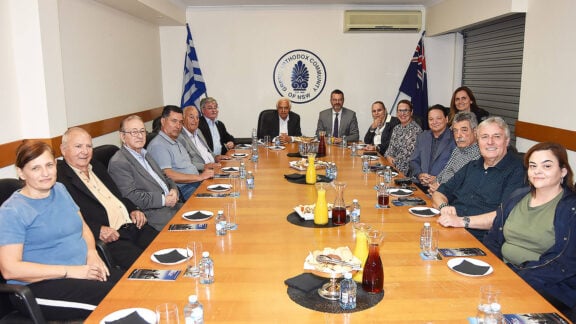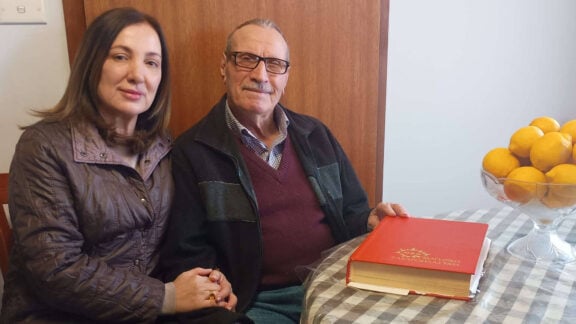On December 16-17, 2021, inventors and scientists introduced 19 innovations designed to help solve common problems in the Greek olive, olive oil, and livestock sectors. Dozens of participants joined presenters online or at the Mediterranean Agronomic Institute in Chania (MAICh) for this free LIVINGAGRO event, with several learning more in one-on-one meetings.
Coordinated by Dr. Panagiotis Kalaitzis, Director of the Department of Horticultural Genetics and Biotechnology at MAICh, this hybrid event was part of the LIVINGAGRO – Cross Border Living laboratories for Agroforestry project funded under the ENI CBC Med Programme 2014-2020. More than 130 individuals registered to participate in this second Greek LIVINGAGRO B2B event, with the majority tuning in online.

Presenters introduced 19 innovations related to five main topics:
- Re-Using Traditional Practices in Agroforestry
- Clearing shrubs and sowing a mixture of grass and legumes in agrosilvopastoral systems
- Thinning and pruning trees in silvopastoral systems
- Adaptive grazing management
- Livestock grazing in olive agroforestry systems
- Olive tree, wild asparagus and free-range chicken polyculture
- Intercropping and Preparing for Climate Change in Olive Groves
- Chickpea intercropping in olive groves
- Intercropping of olive trees and vetch
- Olive tree-avocado intercropping
- Grafted olive trees resistant to the effects of climate change
- Precision Agriculture
- Zen Irriware precision irrigation system
- FruitFlyNet-ii automated monitoring and control system against the olive fly and Mediterranean fruit fly
- MyOliveGroveCoach multi-spectral sensing for the predictive management of Verticillium wilt in olive groves
- NEUROPUBLIC’s gaiasense smart farming system and the LIFE GAIA Sense project
- gaiasense1 mobile app for smart farming
- Olive Mill Machinery and Health Benefits
- New washing and drying system for olives in the mill
- Olive depitter/crusher adapted to remove most of the olive peel, contain no plastic or rubber parts, keep temperature stable, and more
- The Olive Predictor to predict the health benefits in olive oil before harvesting
- Olive Tree and Olive Oil Authentication
- DNA-based diagnostic test to authenticate the varietal origin of olive oil
- oliveID, an image-based tool to identify olive cultivars based on a numeric analysis of size, shape, and structure
Descriptions of all 19 innovations are available in a Catalogue of Innovations in both a Greek version and an English edition. Contact information for the innovators follows each description, so those who missed the event can still get in touch with the innovators individually to find out more about innovations that interest them.

After the presentations, both online and in-person participants were invited to schedule one-on-one meetings to learn more from the innovators, allowing stakeholders to ask specific questions relevant to their own situations, and to learn more about the innovations that may be most useful to them. For example, Marianna Devetzoglou, an olive oil sommelier who works in the Exports Department at Oleosophia olive oil company, was pleased by her meetings “with scientific teams with both an academic and applied outlook, to discuss innovative applications for and beyond our olive trees, helping us deal with resource management, grove management, climate change, and more!”
The majority of the innovators at the event have already met with stakeholders for discussions about the possibility of using their innovations. Part of LIVINGAGRO’s Living Laboratories, such connections between audience members and presenters enable the establishment of new contacts and the sharing of information about innovative ideas, machinery, techniques, and services.
Rather than simply doing research in isolated labs, LIVINGAGRO partners in Italy, Lebanon, Jordan, and Greece have asked farmers, company representatives, policy makers and other stakeholders who work with olive oil and grazed woodlands for input about the types of problems they need to solve, as well as the most workable solutions. Many survey respondents indicated a desire to increase their product’s quality, improve plant health and/or soil fertility, reduce their production costs, increase the quantity produced, and reduce their use of chemical products. Innovations were identified to meet those needs as well as others.
The LIVINGAGRO project is co-financed by the European Union (90 per cent) through the ENI CBC Med Programme 2014 – 2020 and National Resources (10 per cent).









